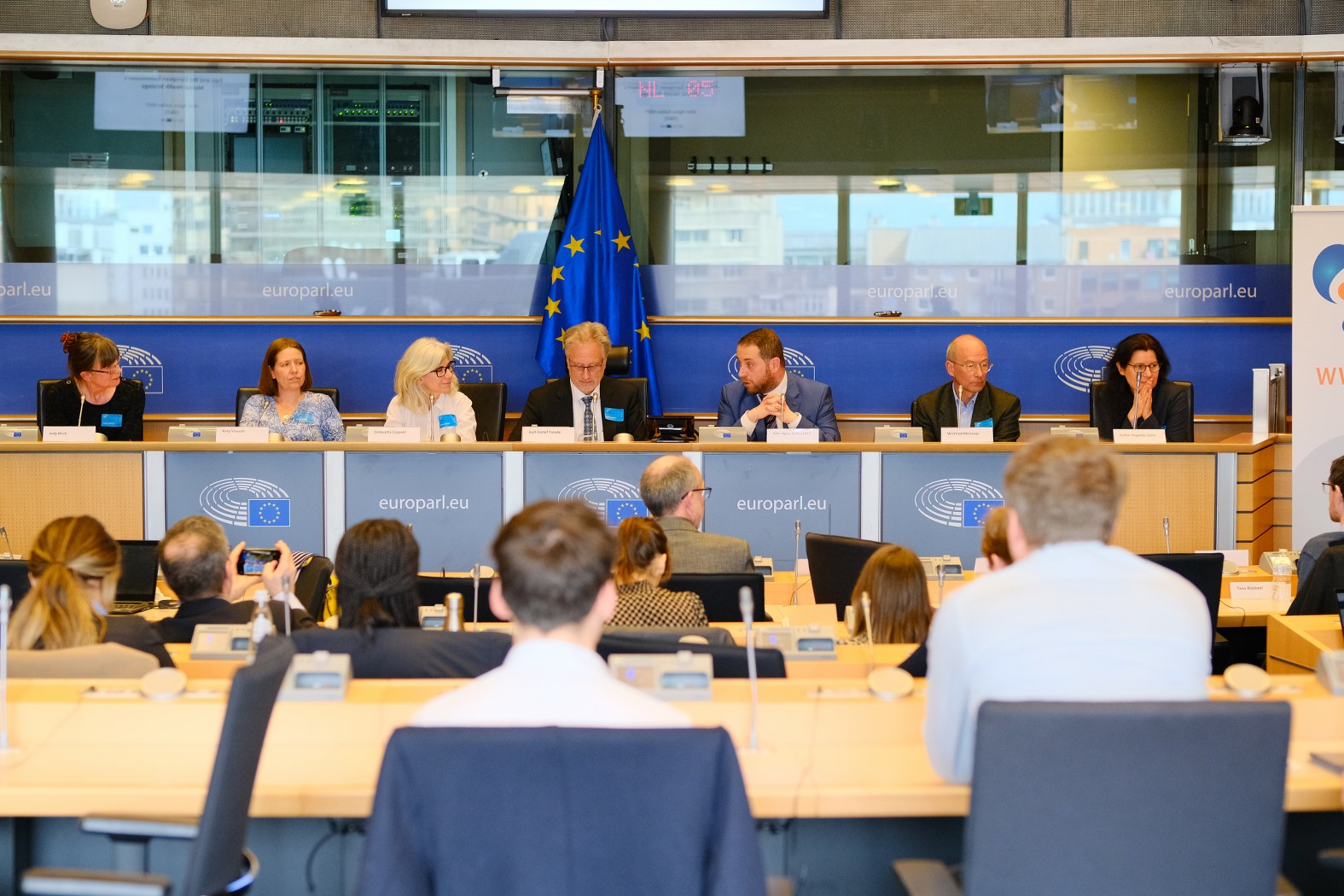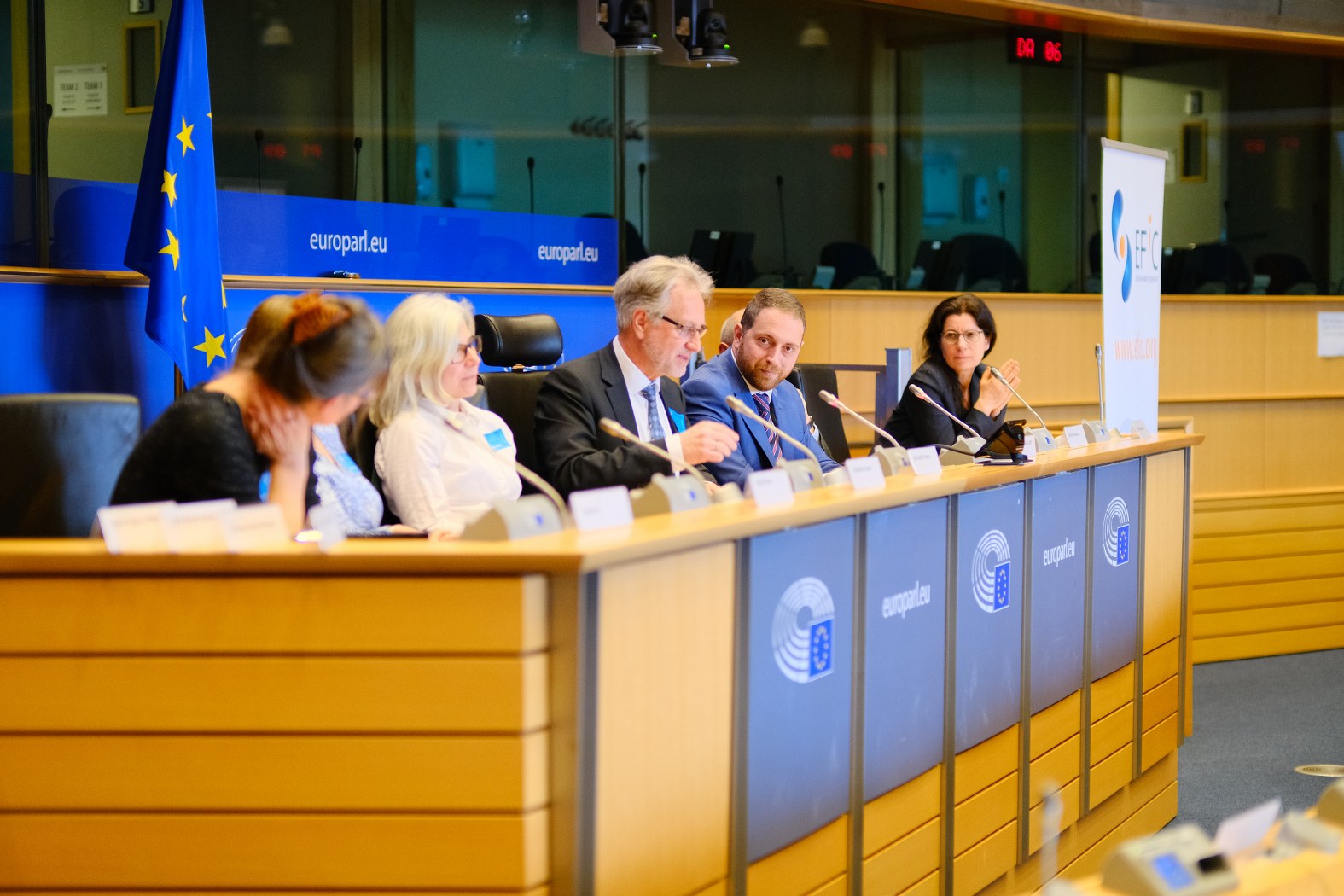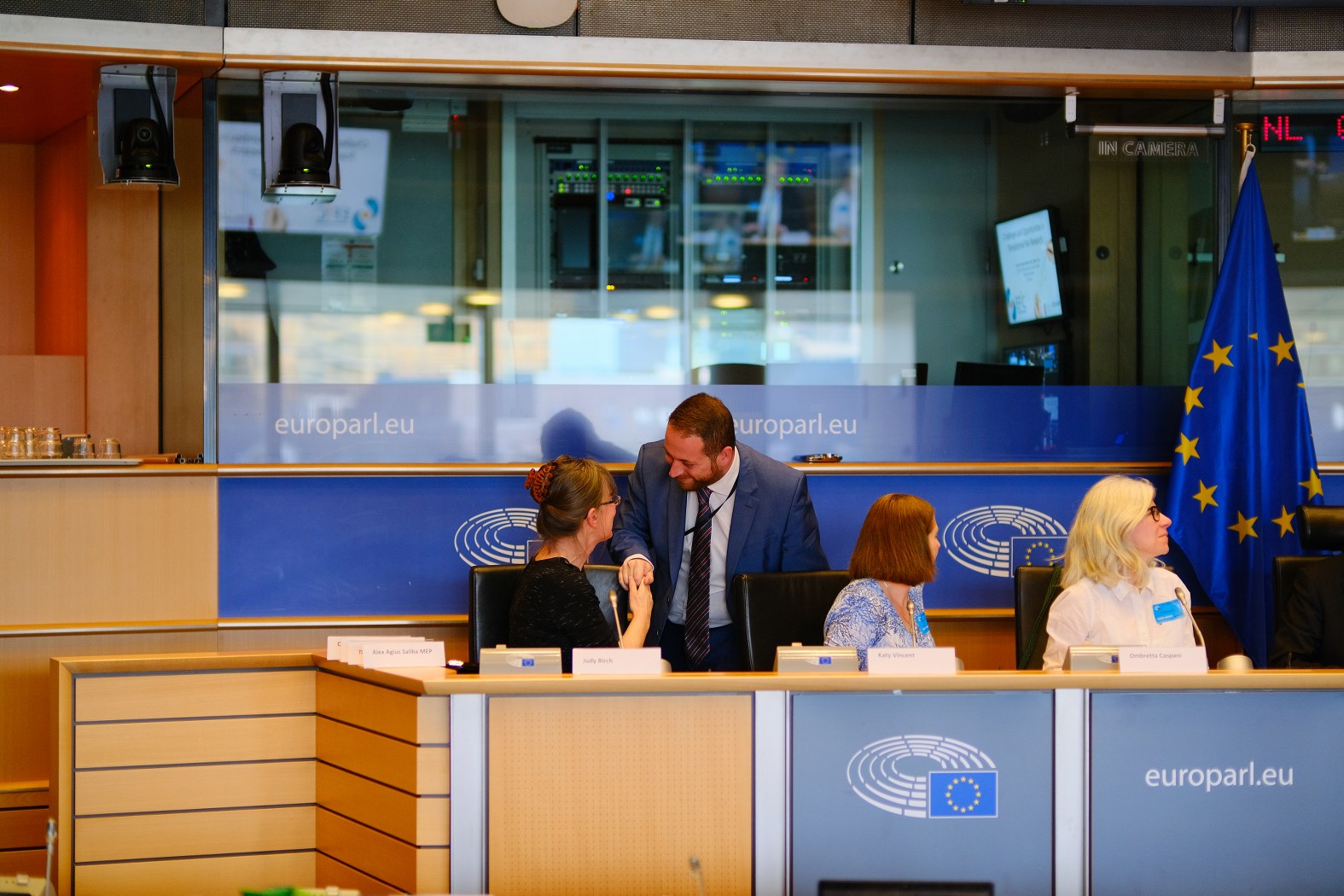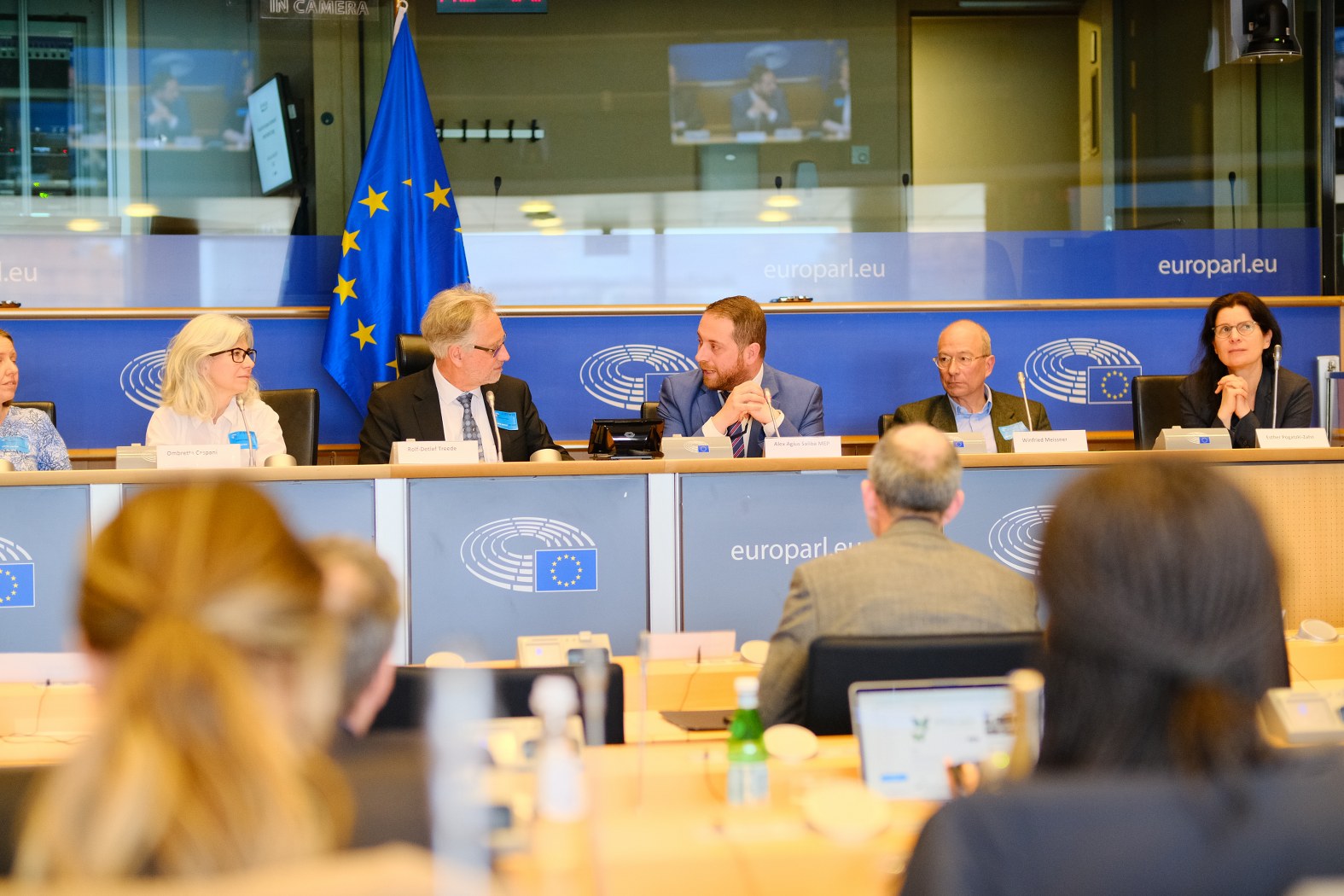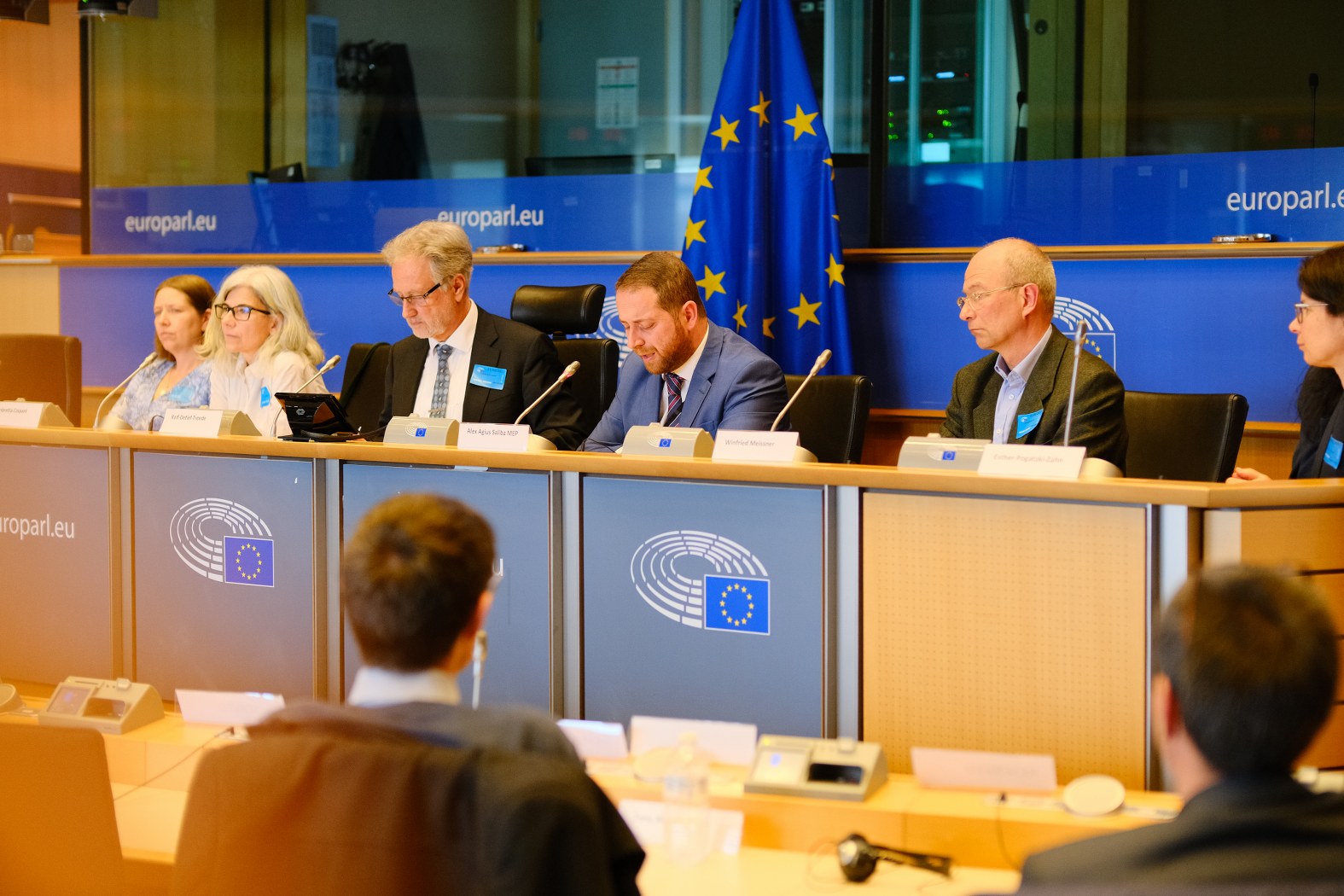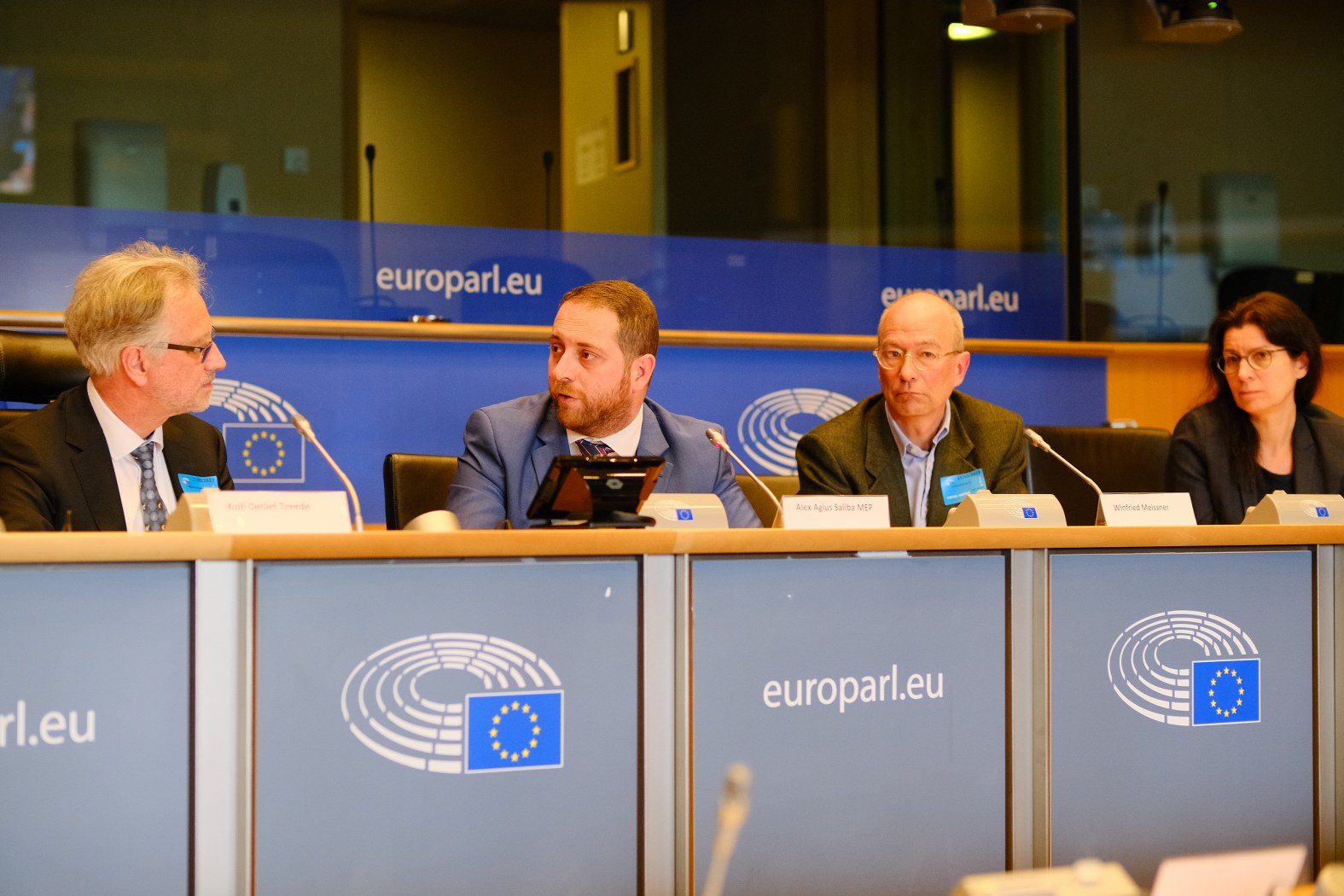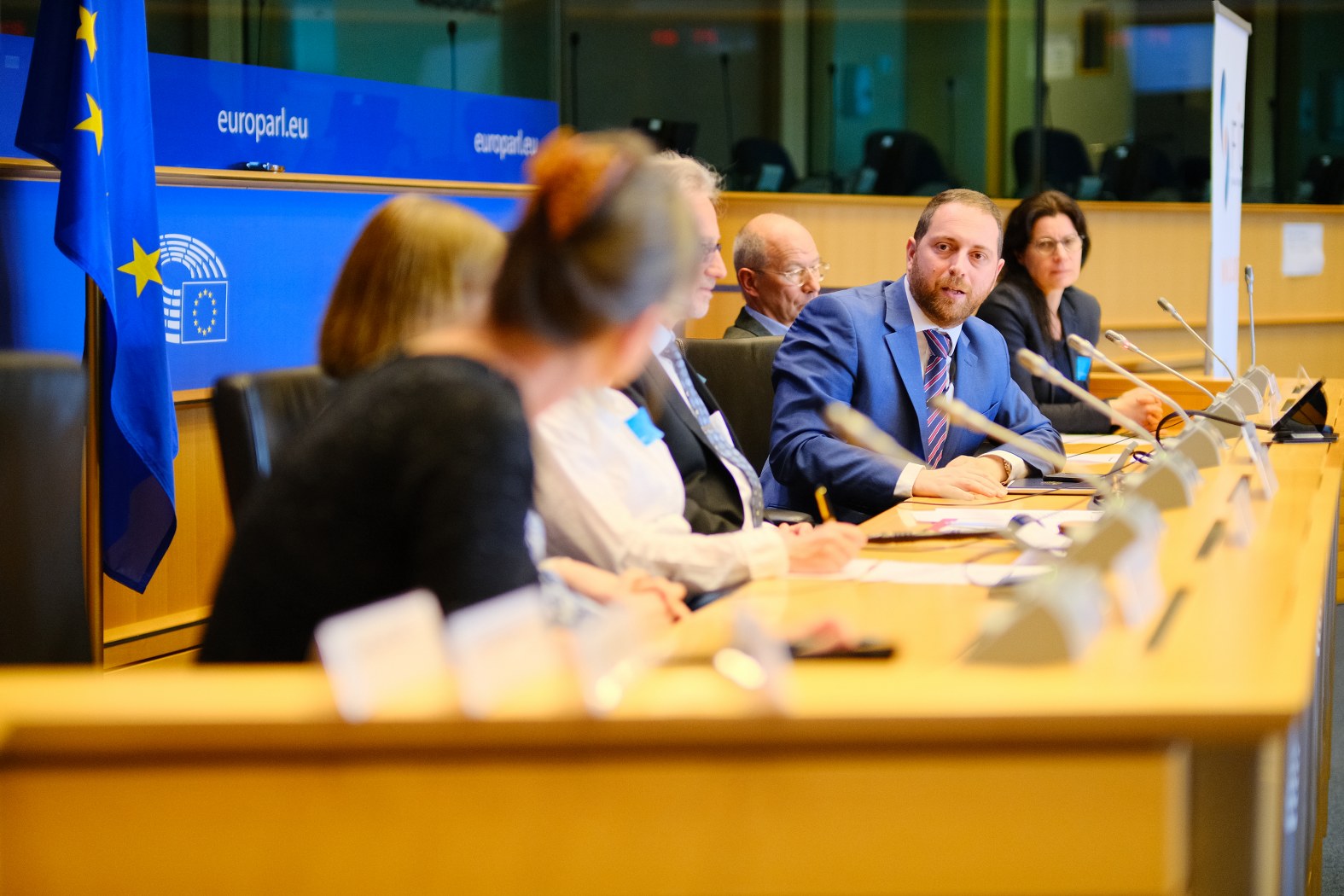The Future of Pain Research in Europe
- Chronic pain is the number one reason why people seek healthcare, accounting for over 50% of sickness absences and 60% of permanent disabilities in Europe alone
- Pain research in Europe is making important strides; however, greater investment and collaboration will be needed to continue to improve the lives of those affected by pain.
- The European pain science community are now finalising research priorities that should be taken forward by policy makers, funders, and research institutions directly.
On 21 March 2023, experts from the European Pain Federation EFIC and the IMI-PainCare consortium were invited to share their insights at a panel discussion on “The Future of European Pain Research” co-hosted by MEPs Cristian Silviu Busoi and Alex Agius Saliba and attended by representatives from the European Cancer Organisation, European Brain Council, Innovative Health Initiative, European Association for Palliative Care, World Physiotherapy (Europe region), European Federation of Psychologists’ Associations and European Society of Anaesthesiology and Intensive Care.
Chronic pain has a huge societal burden: It is the number one reason why people seek healthcare and is a leading cause of disability worldwide, accounting for over 50% of sickness absences and 60% of permanent disabilities in Europe alone, often leading to significant decreases in quality of life and high healthcare costs. An estimated 100 million people suffer from chronic pain in Europe, with conditions ranging from back pain and arthritis to neuropathic pain and migraines.
“The burden of chronic pain on individuals, families, and societies cannot be underestimated,” said Brona Fullen, President of the European Pain Federation. “We need to develop new approaches to understanding and treating chronic pain if we are to improve the lives of millions of people across Europe and beyond.”
The European Pain Federation EFIC, a multidisciplinary professional organization in the field of pain research and medicine, sees the urgent need to focus on these key areas in pain research:
- Understanding pain: Knowledge of the causes of chronic pain, and how it emerges, is still limited.
- Assessing and diagnosing pain: Better pain measurement tools for different patient groups will lead to more accurate, and early, diagnoses.
- Development of new treatments: Most current treatments for chronic pain have only modest short-term benefits.
- Increase use of effective and safe treatments and reduce use of ineffective and harmful treatments: There is an underuse of treatments that can help people safely and effectively; at the same time, many people receive treatments that do not work and that carry harms.
- Personalised pain management: Current treatments are one-size-fits-all in nature, and are not individualised to the patient’s gender, age, lifestyle or overall health.
- Understand and address comorbidities: Pain is often co-existent with other health conditions, including mental health disorders, obesity, and sleep disorders – all of which complicate management and slow recovery.
- Assess and target patient health literacy: People with a lived experience of chronic pain often receive health information that is difficult to understand and act on and are rarely involved in efforts to improve pain knowledge, practice, and policy.
IMI-PainCare is part of the Innovative Medicines Initiative (IMI), a public-private partnership between the European Union and the pharmaceutical industry aiming to advance medical research and improve healthcare by bringing together stakeholders from different sectors to collaborate on research projects. While pain research, such as IMI-PainCare, is currently funded by the European Union, the European pain science community are now finalising research priorities that should be taken forward by policy makers, funders, and research institutions directly.
In conclusion, pain research in Europe is making important strides in understanding the underlying mechanisms of pain and developing new treatments and therapies. However, there is still much work to be done, and greater investment and collaboration will be needed to continue to advance our understanding of this complex condition and improve the lives of those affected by pain.
For more information please view the full event report here


